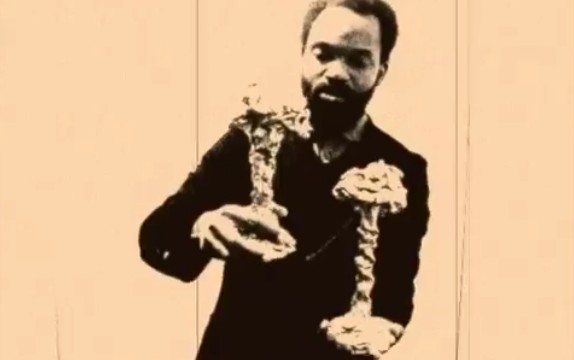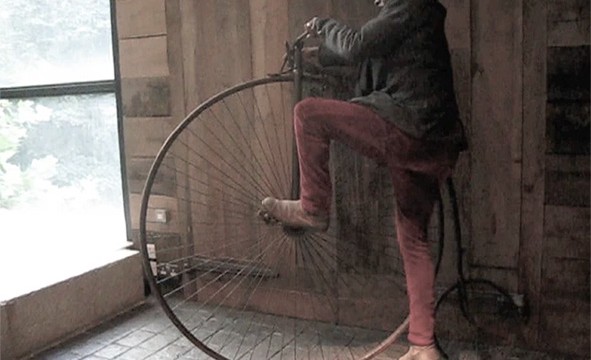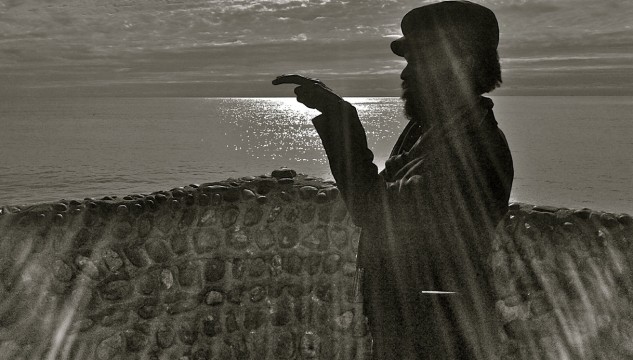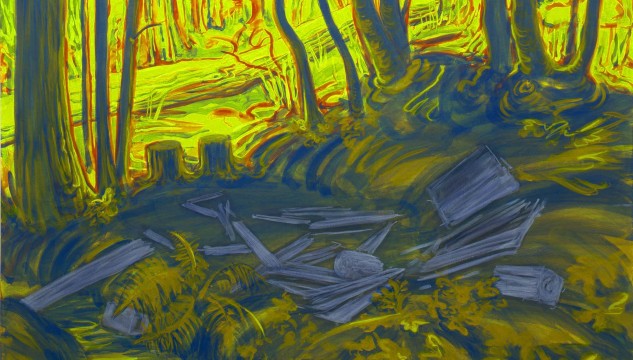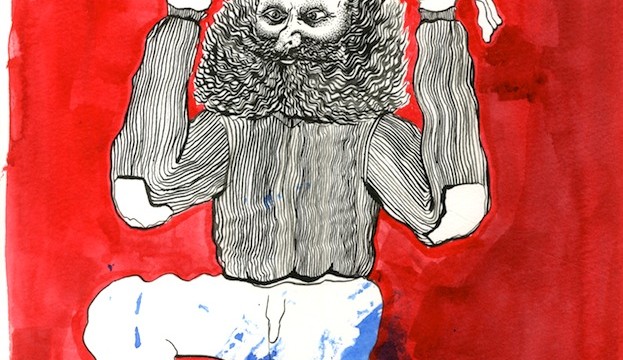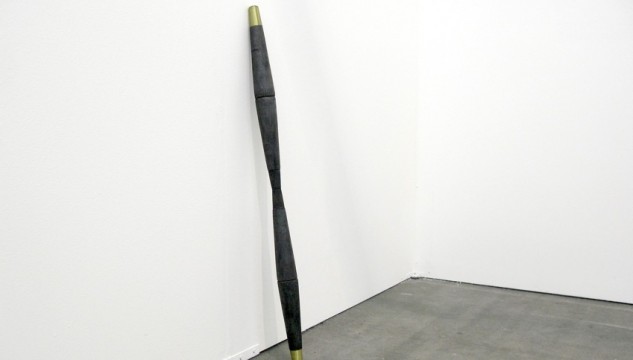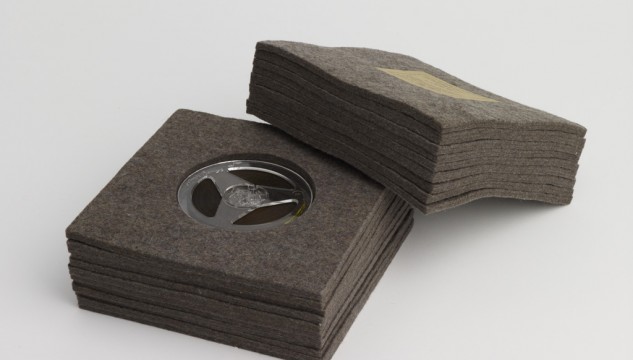-
Samson Kambalu, Two Mushroom Clouds, Video still, 2012
-
Samson Kambalu, 1876 (On the Penny Farthing), Video Still, 2012
-
Samson Kambalu, Captain, Video still, 2012
-
Sigrid Holmwood, Remains of a Camp at Morningstar, Fluorescent yellow, yellow ochre, vermillion, blue bice and verditer in egg tempera on panel, 2008
-
Hardeep Pandhal, Untitled, India ink on paper, 2011
-
Jochem Hendricks, 6.128.374 Grains of Sand, Sand and glass vessel, 2002-2003
-
Kevin Hunt, Stem, Burnt wood and brass, 2011
-
Joseph Beuys, Ja Ja Ja Nee Nee Nee, Felt and magnetic tape,1969
Tattoo City: The First Three Chapters
30 November 2012 — 27 January 2013Castlefield Gallery is delighted to present Tattoo City: The First Three Chapters co-curated with Malawi born artist/writer Samson Kambalu. The exhibition includes Kambalu’s work interspersed with a selection of original art inspired by Rudolf Steiner’s esoteric philosophy of freedom – anthroposophy[1], as well as newly commissioned and existing works by guest artists including Lee Appelby, Joseph Beuys, Jochem Hendricks, Sigrid Holmwood, Kevin Hunt, Rei Kakiuchi, San Keller, Sam Mukumba, David Newbatt, Hardeep Pandhal, Nicolas Pople and Poppy Whatmore.
Kambalu’s first book The Jive Talker or How to Get a British Passport, published by Random House, Simon & Schuster and Unionsverlag in 2008, is a memoir of his upbringing in Malawi and the influence of Nietzsche in shaping his own art practice and quasi-religion ‘Holyballism’, centred around a sculpture of football wrapped in pages of the Bible. The exhibition Tattoo City: The First Three Chapters takes as its inception Kambalu’s third literary work (in progress) bearing the same title. Tattoo City is a novel featuring a Waldorf educated, female rock star protagonist and her philanthropic pursuits in Africa. Transpiring from the narratives in both The Jive Talker and Tattoo City – and the exhibition – are themes that deal with the tension in contemporary culture’s preoccupation with ‘otherness’ and notions of primitivism. The complex relationship between Western ‘progressive’ ideas – such as anthroposophy and modern art – and African or non-Western cultures, can be seen to be a reflection of Kambalu’s own autobiographical experience.
Transposed from his studio to the gallery, Kambalu’s writing bureau provides the starting point to the exhibition that includes works by artists, whose eclectic practices create absurd connections and interplays. These new and existing works include a preview of Kambalu’s latest novel, Uccello’s Vineyard, a playful and inventive exploration of art as parable, transposing the contemporary art world to turbulent 16th century times of the Reformation and High Renaissance; architect Nicolas Pople’s flat-packed film booth designed according to anthroposophic principles; Kambalu’s video ‘rants’ inspired by early cinema and the antinomianism of a 17th century religious sect, the Ranters[2]; a re-make of Klaus Kinski’s Jesus Christ, and Joseph Beuys’ ‘trance’ sound work, Ja, Ja, Ja, Nee, Nee, Nee.
The exhibition is approached as a gesamtkunstwerk in which the works by the participating artists become ‘articulations’ of, or ‘punctuations’ within, Kambalu’s practice representing a condensation of his own diverse and playful practice drawing on the sensibilities of Joseph Beuy’s work and the artist’s own philosophy, ‘holyballism’, inspired by the spirit of inquiry, criticism and dissent of both his African and Protestant heritage.
Tattoo City is the gallery’s annual exhibition co-curated with an artist or non-curator organised under the exhibition strand Art & Society as part of the gallery’s annual programme theme World in Transition.This part of the programme explores and subverts traditional modes of production, collaboration, curation and display.
[1] A philosophy founded by Austrian Rudolf Steiner (1861-1925) exploring the spiritual world and natural sciences applied to many areas such as education, agriculture and medicine.
[2] Often referred to as maverick messiahs, prophets or teachers who became active in England between 1649-54 prompting a wave of moral panic clergymen, magistrates and MPs towards the end of the Civil wars.
Artist’s Biography
Artist and author Samson Kambalu studied at the University of Malawi (BA Fine Art and Ethnomusicology, 1995-99); Nottingham Trent University (MA Fine Art, 2002-03) and Chelsea College of Art and Design (PhD, 2011 – present). He works in drawing, painting, installation, video, literature and performance to explore and critique religion and identity politics. The artist’s philosophy, ‘holyballism’ is demonstrated in an interactive work which he has exhibited on several occasions since 2000, titled Holy Ball, a football plastered with pages of the Bible. 52 Holy Balls was shown at the Institute of International Visual Arts, London in 2008.
He has shown work internationally at Whitechapel Gallery, London (2008); Sai Gallery, Osaka (2009); Tokyo International Art Festival (2009); Brooklyn Institute of Contemporary Art, New York (2006); Museum der Bildenden Künste Leipzig (2006); New Art Exchange, Nottingham (2004, 2008); Nottingham Castle Museum and Art Gallery (2005); Barbican, London (2004); Liverpool Biennial (2004); Museum De Paviljoens, Almere (2003); Stedelijk Museum Zwolle (2003) and Chancellor College, University of Malawi, Zomba (2000).
Kambalu is the recipient of several awards and residencies including the Thami Mnyele Foundation Residency Program, Amsterdam (2000); the Arts Council England deciBel Visual Arts Award (2004) and a Society of Authors writing grant (2010). His 2008 autobiographical book The Jive Talker or How to Get a British Passport (Random House, Simon & Schuster and Unionsverlag) was awarded Winner of the National Book Tokens ‘Global Reads’ Prize (2010).
Preview & Book Launch: Thurs 29 Nov, 6-8pm – All welcome
Castlefield Gallery would like to thank Alan Lewers, James Alderson, Nicolas Pople, Annely Juda Gallery, Angela Lord, Ethster A. Austin, Ewan Mathers from Michael House Rudolf Steiner School and Shelly Sacks.
The preview of Tattoo City is kindly supported by Barefoot Wine and The Knott
Christmas Closing: Castlefield Gallery will be closed from Sat 22 Dec 2012 and will re-open on Friday 4 Jan 2013
